Managing multiple local chapters while maintaining organizational unity is easy as long as you understand the autonomy-oversight framework that makes multi-chapter coordination sustainable. Organizations that master this balance report better member retention and improved membership growth.
This comprehensive guide explores how successful organizations balance chapter autonomy with central oversight through proven governance structures, technology infrastructure, and management frameworks.
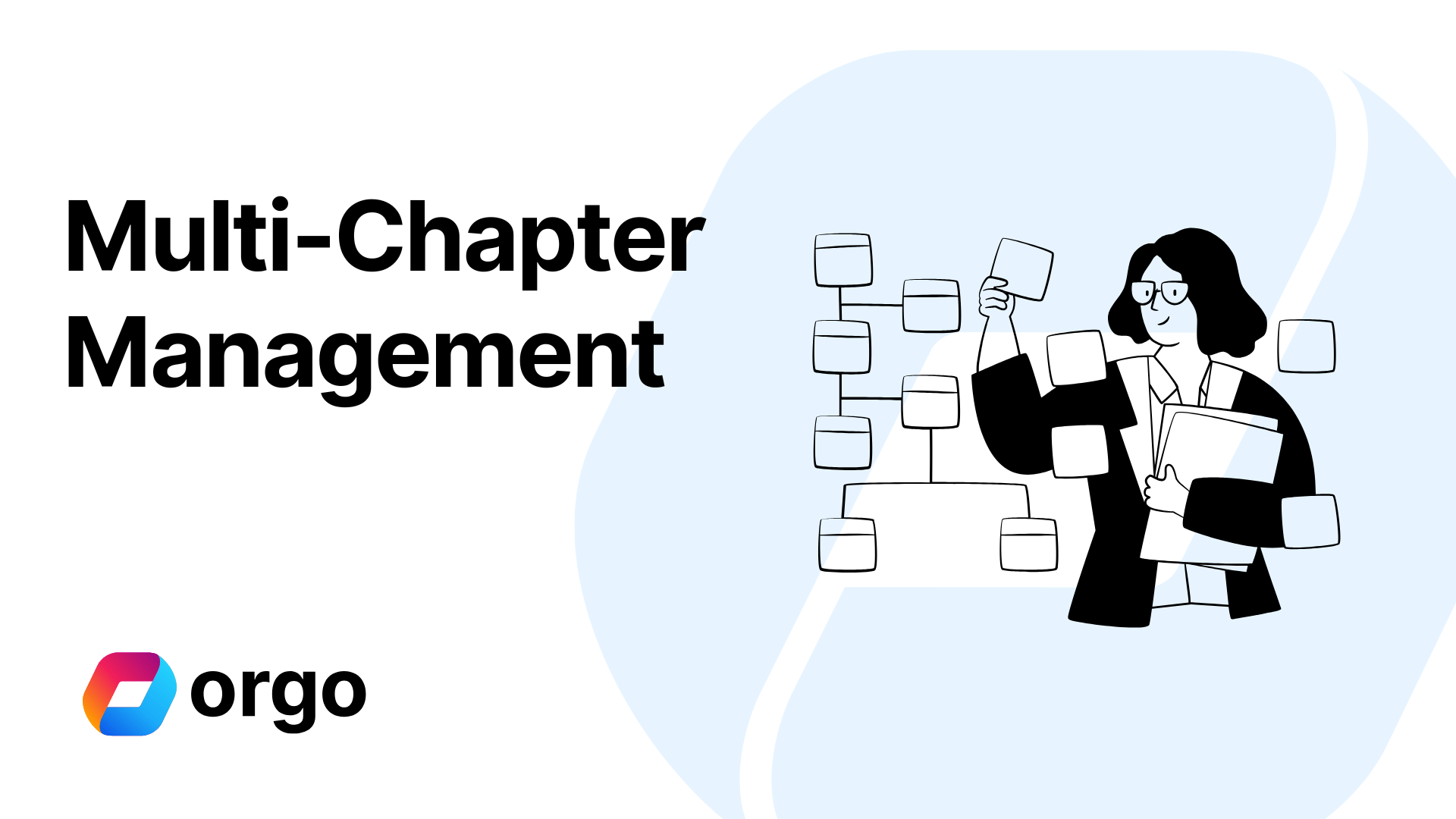
You'll discover why federated structures outperform centralized models, how to implement hierarchical permissions that respect local leadership while maintaining accountability, and specific strategies that reduce administrative overhead while improving member engagement across all chapters.
Whether you're managing five regional branches or coordinating hundreds of local groups, understanding multi-chapter management transforms organizational complexity from a burden into a competitive advantage.
What Is Multi-Chapter Management and Why Does It Matter?
Defining Multi-Chapter Organizations
Multi-chapter management refers to coordinating multiple semi-autonomous branches across geographic regions with tens, hundreds, or even thousands of members each, creating a federated structure that balances local responsiveness with organizational alignment. These chapters operate as distinct units within a larger organization, maintaining their own leadership, activities, and often budgets while adhering to central mission and governance standards.

Multi-chapter structures typically organize around three models:
- geographic divisions serving specific territories
- interest-based groups focusing on specialized topics or demographics
- hybrid approaches combining both elements
Professional associations maintain state or provincial chapters to address regional licensing requirements and local networking needs. Youth organizations (like scouts) establish local troops based on community boundaries and school districts. Nonprofits create field offices to serve distinct populations while coordinating national advocacy efforts.
The complexity of multi-chapter management increases exponentially with scale. Organizations with five chapters face coordination challenges, while those managing 50+ chapters require sophisticated governance frameworks and technology infrastructure.
The Growth Imperative
Organizations implementing effective chapter management systems report better member retention compared to centralized structures. The data reveals clear thresholds where multi-chapter management becomes essential: managing 5+ chapters, coordinating 1,000+ total members, or operating across multiple time zones.
When organizations must transition from informal coordination to structured multi-chapter management, administrative time per member increases without proper systems once organizations exceed 10 chapters. This is the time when communication effectiveness drops when chapters operate in information silos. Also, financial discrepancies appear in organizations managing their chapters through spreadsheets and manual processes.
Modern organizations recognize that multi-chapter structures create resilience through distributed leadership and local engagement. When one chapter faces challenges, others continue thriving. This organizational redundancy protects against single points of failure while creating multiple growth vectors. Each chapter becomes an innovation laboratory, testing new approaches that successful experiments can scale across the entire organization.
The Autonomy-Oversight Challenge in Chapter Management
Why Local Autonomy Matters
Local autonomy enables chapters to respond immediately to regional needs, cultural differences, and community opportunities without waiting for central approval. Chapters operating with appropriate independence have higher member retention because local leaders understand their community's unique dynamics, preferences, and constraints better than distant headquarters.
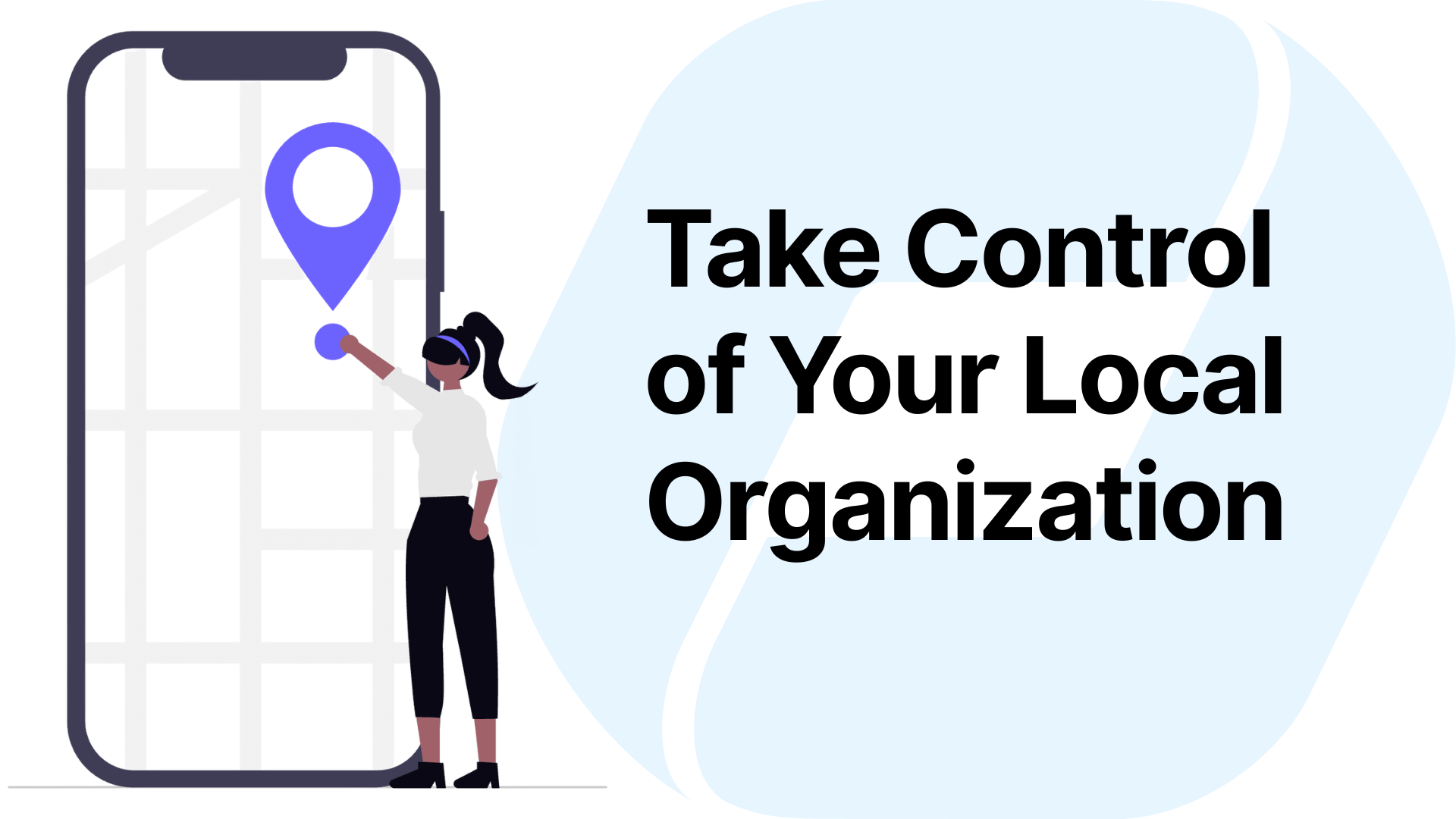
Leadership development accelerates when chapters maintain real decision-making authority. Local positions become meaningful rather than ceremonial, attracting capable volunteers who want genuine responsibility. These chapter leaders develop skills in managing budgets, organizing events, and building teams, creating a leadership pipeline for the entire organization. Organizations with strong local autonomy develop 3x more qualified candidates for regional and national positions.
Member ownership increases dramatically when decisions happen locally. Members see direct connections between their participation and chapter outcomes. They influence programming, shape priorities, and build relationships with accessible leaders. This psychological ownership translates into concrete benefits: higher event attendance, better volunteer recruitment, and more member referrals compared to centrally-controlled chapters.
Regional decision-making, self-governance structures, and local initiative support create sustainable engagement patterns. Chapters adapt meeting times to local schedules, plan events around regional calendars, and develop partnerships with community organizations. This flexibility proves especially critical for volunteer-driven organizations where rigid, centralized requirements often conflict with local realities.
Why Organizational Oversight Is Essential
Organizational oversight ensures brand consistency across all chapters, protecting reputation and maintaining member trust. Without central standards, chapters develop divergent practices that confuse members and dilute organizational identity. Professional associations risk credibility when chapters deliver inconsistent certification programs. Youth organizations face safety concerns when chapters ignore national policies.
- Legal compliance requires coordinated oversight, especially for organizations operating across jurisdictions.
- Tax-exempt nonprofits must ensure all chapters maintain charitable purposes and proper documentation.
- Data privacy regulations like GDPR demand consistent handling of member information across all organizational units.
- Insurance requirements necessitate standardized safety protocols and risk management procedures.
Financial accountability becomes impossible without organizational oversight. Chapters managing independent finances without reporting create audit nightmares and regulatory violations. Donation mismanagement by one chapter can trigger investigations affecting the entire organization. Revenue sharing between organizational levels requires transparent tracking and standardized accounting practices.
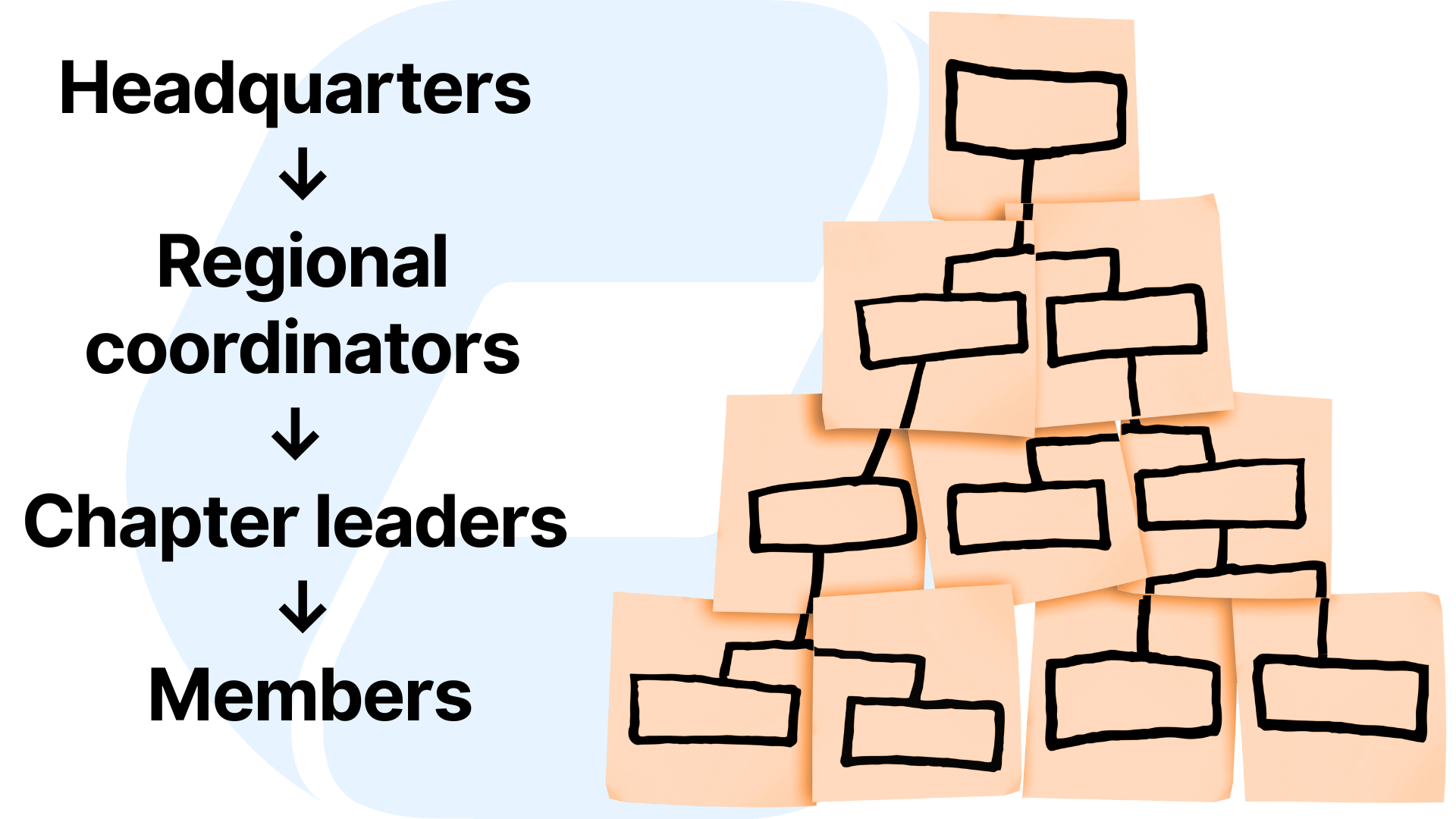
Mission alignment suffers when chapters operate without coordination. Individual chapters may drift toward activities that contradict organizational values or compete with sister chapters for resources. The relationship hierarchy of headquarters → regional coordinators → chapter leaders → members provides essential structure for maintaining strategic focus while permitting tactical flexibility.
Common Failure Points
Data silos between chapters create significant administrative burdens as staff duplicate efforts, reconcile conflicting information, and manually compile reports. Member records get fragmented across chapter-specific spreadsheets, making transfers problematic and organization-wide communication impossible.
Organizations frequently discover the same member registered in multiple chapters simultaneously, paying duplicate dues due to database fragmentation.
Inconsistent member experiences across locations undermine organizational value propositions. Members transferring between chapters encounter different benefit structures, communication styles, and quality standards. Professional development organizations commonly lose relocating members because chapters operate like independent organizations rather than coordinated network nodes.
Financial discrepancies and reporting delays plague organizations without integrated chapter management. Chapters submit financial reports in different formats at irregular intervals, making consolidated budgeting impossible.
Payment processing through separate systems creates reconciliation challenges and increases transaction costs substantially. Manual compilation of chapter finances delays organizational reporting by weeks or months.

During organization-wide initiatives, communication breakdowns reveal coordination failures. National campaigns fail when chapters don't receive timely information or lack implementation resources. Strategic planning becomes theatrical when chapter input isn't systematically collected and incorporated. Crisis response suffers when communication channels aren't pre-established and tested.
How To Balance Chapter Independence with Central Control
The Hierarchical Permission Framework
The three-tier permission structure of organization-wide → regional → local chapter permissions creates clear authority boundaries while enabling appropriate autonomy. Organization-wide permissions control fundamental settings like branding, compliance policies, and financial structures that require consistency.
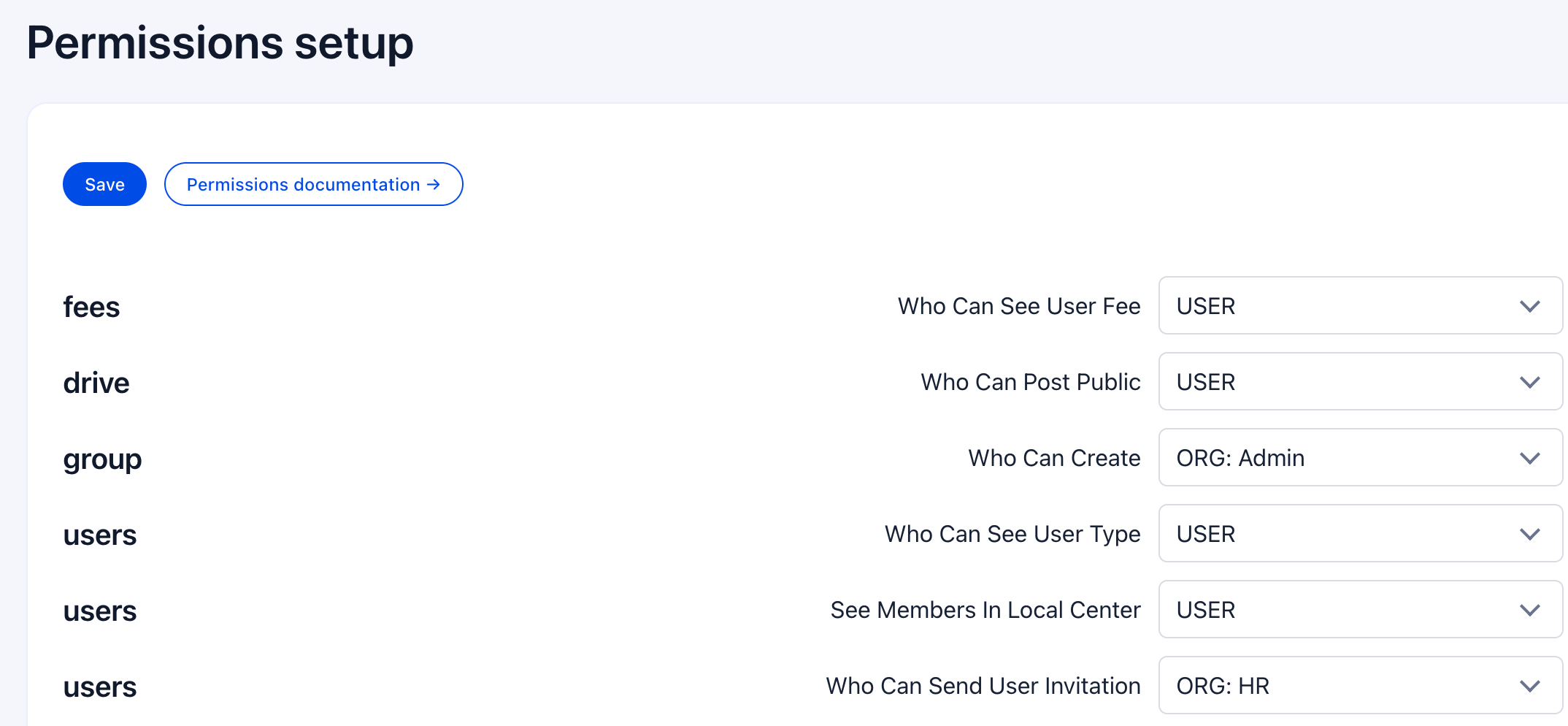
Regional permissions coordinate multiple chapters within geographic areas, facilitating resource sharing and joint initiatives. Local chapter permissions manage day-to-day operations, member services, and community engagement.
Implementing a permission inheritance system ensures rights cascade logically through organizational levels without creating security gaps or administrative burden. National administrators can set baseline permissions that automatically apply to all chapters while allowing additional permissions at lower levels. Regional coordinators are able to inherit organizational permissions plus region-specific authorities. Chapter leaders can also receive inherited permissions plus local management rights.
Role-based access control (RBAC) implements consistent permission sets across the entire organization. Standard roles include:
- Admin for full chapter management
- HR for member data and onboarding
- Financial for payments and budgeting
- Event Manager for program coordination
Each role receives specific permissions appropriate to its responsibilities, regardless of organizational level. Chapter financial officers access local finances while organizational treasurers see consolidated reports across all chapters.
Modern platforms like Orgo encode these permission hierarchies through configurable inheritance rules that eliminate manual permission management.
When members change roles or transfer chapters, their permissions automatically update based on their new position and location. This systematic approach reduces security risks while ensuring appropriate access for every organizational role.
Establishing Clear Governance Boundaries
Mandatory organizational policies establish non-negotiable standards for branding, legal compliance, safety protocols, and financial controls. These policies protect the organization's reputation, legal standing, and/or tax-exempt status while providing clear frameworks within which chapters operate autonomously.
Brand guidelines ensure consistent logo usage and messaging. Compliance requirements mandate background checks for youth program volunteers. Financial policies require monthly reporting and audit trails.
Optional chapter-level decisions empower local leaders to respond to community needs and member preferences. Chapters control event planning within budget constraints, selecting programs that resonate with local interests.
Volunteer management adapts to local availability and skills. Partnership development focuses on community organizations and regional sponsors. Meeting schedules accommodate local patterns and facility availability.
The decision-making matrix clarifies what requires central approval versus local discretion. Strategic decisions affecting multiple chapters or organizational reputation require central approval: constitutional changes, national partnerships, and media statements on controversial topics.
Operational decisions within established policies remain local: event scheduling, volunteer recognition, member services, and local fundraising initiatives. Modern governance platforms encode these boundaries through automated approval workflows, eliminating ambiguity while accelerating decision-making.
Creating Feedback Loops
Effective feedback loops transform one-way communications into genuine conversations where information flows continuously rather than pooling in isolated pockets.
Bottom-up communication starts with making it easy for chapters to share insights. Replace bureaucratic monthly reports with simple templates asking: What worked? What didn't? What would help?
When chapters see their suggestions implemented within weeks, participation becomes enthusiastic rather than obligatory. Top-down alignment works best when the headquarters provides adaptable frameworks rather than rigid mandates.
Policy changes need similar thoughtfulness. Include chapter leaders in policy development from the beginning. When they understand why changes are necessary and help shape solutions, resistance transforms into ownership. This collaborative approach turns potential revolts into appreciated improvements.
Lateral knowledge sharing between chapters multiplies innovation across your network. Create structured peer learning through regional meetings where leaders share wins and challenges, online forums organized by common issues, and mentorship programs pairing experienced leaders with newcomers.
One organization's "Chapter Spotlight" newsletter feature lets chapters share detailed case studies monthly. Other chapters could access templates, connect with the featured leader, and adapt successful approaches. Within a year, innovations spread organically across the entire network.
When chapters trust their input matters and see headquarters responding, feedback loops become self-reinforcing, creating an organization that learns and adapts continuously.
The Technology Infrastructure That Supports Multi-Chapter Management
Centralized Database with Distributed Access
A unified member database serving as the single source of truth eliminates data fragmentation while respecting chapter boundaries. This way, each member record exists only once in the central system with appropriate visibility controls based on organizational roles and chapter affiliations. This architectural approach prevents duplicate records, ensures data consistency, and enables organization-wide analytics while maintaining chapter privacy.
Chapter-specific views provide local leaders with relevant member information without exposing data from other chapters. Chapter administrators see complete profiles for their members, including contact information, participation history, and payment status.
Regional coordinators view aggregated data across their chapters for trend analysis and resource allocation. National administrators access organization-wide metrics while respecting individual privacy through role-based visibility controls.
Automatic synchronization ensures real-time updates across all organizational levels without manual data transfer or reconciliation. When members update their profiles, changes immediately reflect in chapter rosters and organizational directories. Event registrations automatically update attendance records and financial reports. Payment processing instantly updates membership status and generates appropriate receipts. This synchronization eliminates hours of weekly data management per chapter.
Financial Management Across Chapters
Dual-level fee collection enables organizations to process national dues alongside chapter-specific fees through integrated workflows. Members can complete single payment transactions that automatically distribute funds according to configured rules.

National dues flow to the organizational account while chapter fees deposit locally. This unified approach reduces payment abandonment compared to separate collection processes.
Chapters with juridical autonomy are able to connect separate accounts for direct payment processing while maintaining organizational visibility. Each chapter controls its merchant account, managing payment methods, refund policies, and financial relationships.
Revenue sharing models automatically distribute funds between organizational levels based on membership types, event participation, or donation campaigns. Percentage-based splits ensure sustainable funding across all levels. Fixed-amount distributions guarantee minimum operating budgets regardless of chapter size.
Automated reconciliation can match payments to member records, event registrations, and donation campaigns. Payment reporting provides real-time visibility into cash flow, outstanding receivables, and financial trends.
Communication and Collaboration Tools
Hierarchical announcement systems enable targeted communication at organizational, regional, and chapter levels without message duplication or gaps. This way, organization-wide announcements reach all members simultaneously for critical updates, policy changes, or national campaigns.
Regional messages coordinate multi-chapter initiatives, training opportunities, or area-specific information. Chapter announcements focus on local events, volunteer needs, and community updates.
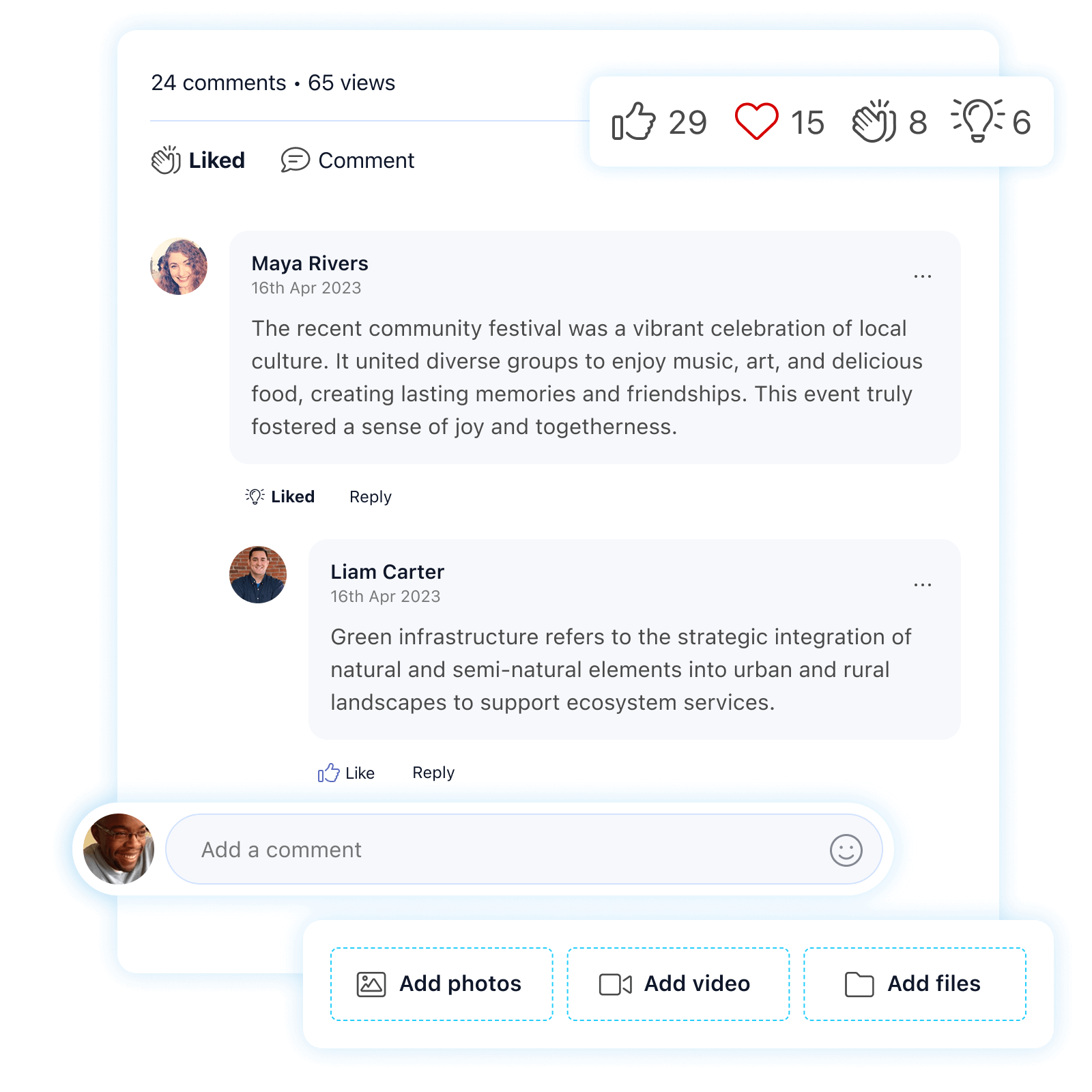
Chapter forums create local discussion spaces with appropriate privacy controls and moderation capabilities. Members engage in chapter-specific conversations without cluttering organization-wide channels. Discussion topics range from event planning to local partnerships, creating institutional knowledge accessible to future leaders. Privacy settings ensure sensitive chapter discussions remain confidential while allowing public content to build community engagement.
Document management systems are able to provide shared resources with permission-based access, enabling collaboration while protecting sensitive information. Organizational documents like governance policies, brand guidelines, and training materials remain centrally managed with read-only chapter access. Chapter documents, including meeting minutes, financial reports, and local procedures, stay within chapter boundaries. Shared folders facilitate resource exchange between chapters willing to collaborate.
Reporting and Analytics
Local chapter should track health metrics such as membership growth, engagement rates, and financial performance through automated dashboards updated in real-time. Membership metrics can also include new registrations, renewals, and retention rates compared to organizational averages. Engagement indicators measure event attendance, volunteer hours, and discussion participation. Financial performance tracks revenue generation, expense management, and budget compliance.
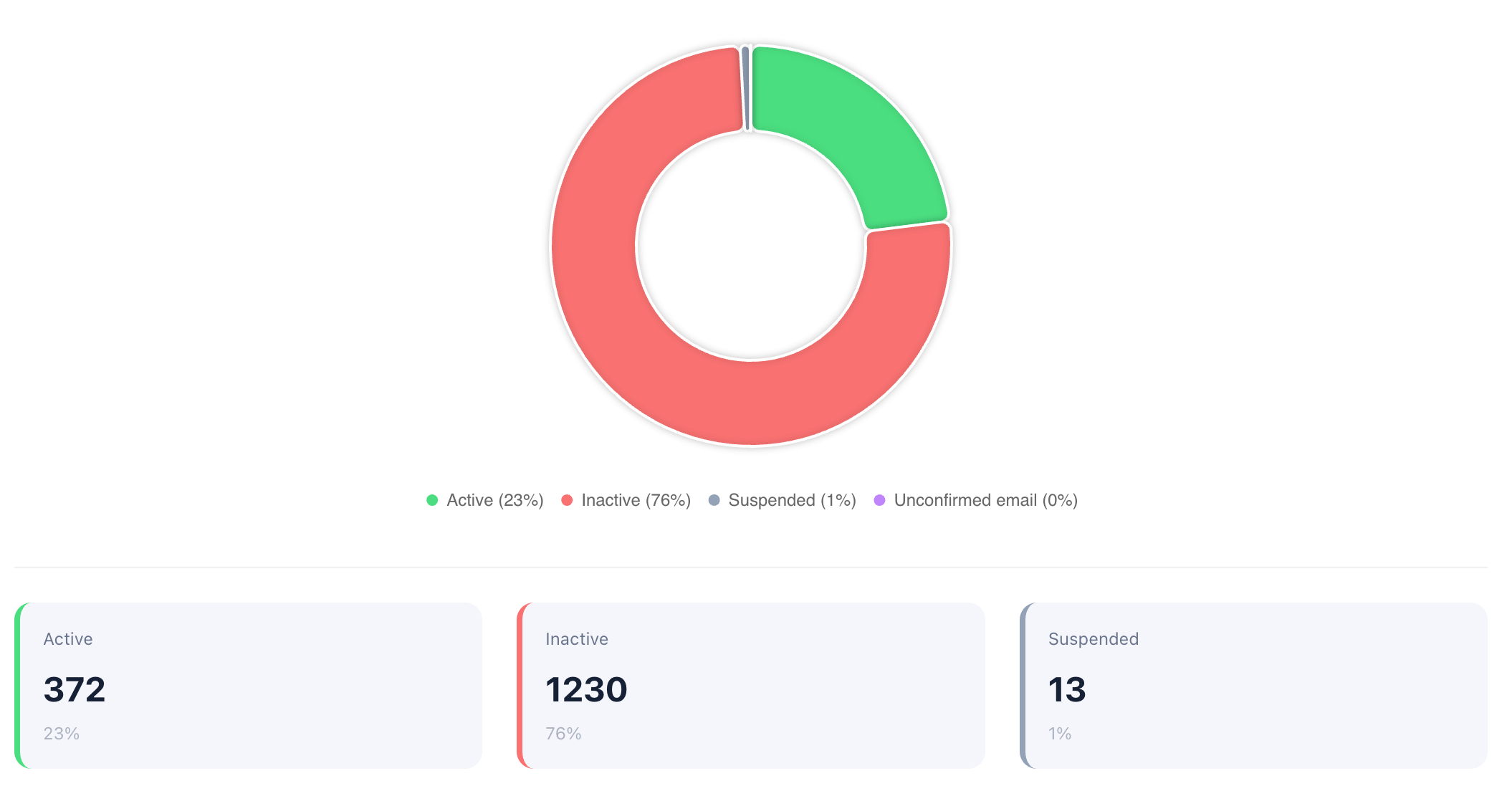
Predictive analytics can identify at-risk chapters before problems escalate into crises requiring emergency intervention. Early warning indicators include declining meeting attendance, reduced volunteer engagement, and leadership turnover patterns. Financial stress signals appear through delayed reporting, budget overruns, or revenue shortfalls. Member satisfaction surveys reveal brewing discontent before mass departures.
What Results Can You Expect from Effective Multi-Chapter Management?
Operational Improvements
Administrative overhead time savings transform chapter operations from burden to efficiency. Tasks previously requiring hours are now completed in minutes through automation and integration.
Member registration accelerates from lengthy manual entry to quick automated processing. Event setup is dramatically reduced by using templates and cloning. Financial reconciliation shrinks from days to hours through automated payment matching and report generation.
Error reduction improves data quality and member satisfaction while reducing correction efforts. Duplicate member records disappear from centralized databases with built-in validation.
Payment errors decline through automated processing and receipt generation. Event conflicts are eliminated through shared calendaring and automatic conflict checking. Communication mistakes decrease through targeted distribution lists and delivery confirmation.
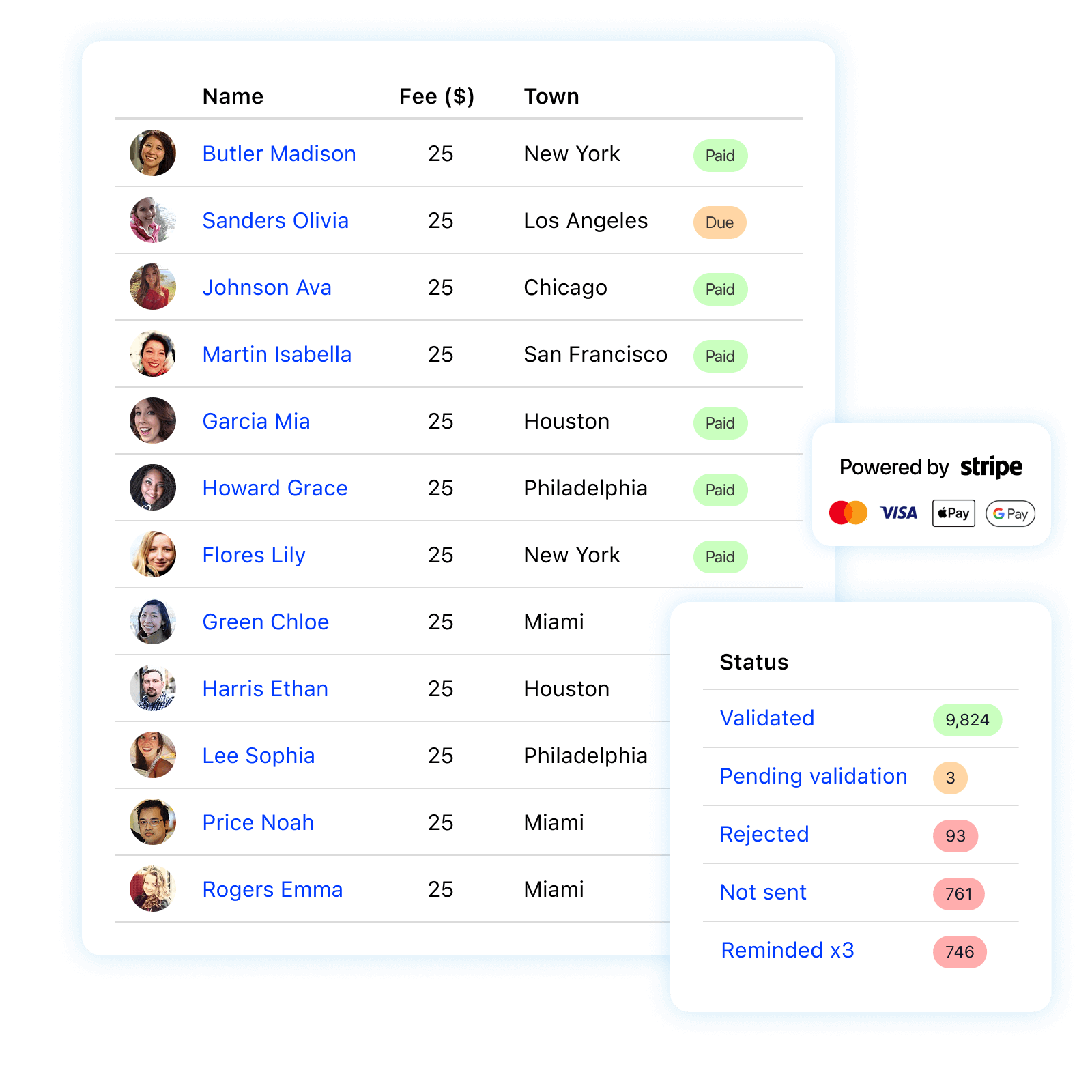
Process acceleration enables immediate response to member needs and organizational opportunities. Member transfers between chapters complete quickly, versus days of paperwork and coordination. New chapter setup takes hours instead of weeks through template-based provisioning.
Report generation happens instantly rather than requiring manual compilation. Decision-making accelerates through real-time data access and automated approval workflows.
Organizations implementing these improvements report significant operational benefits. Administrative time is reduced, freeing resources for mission-focused activities. Volunteer coordinators spend time on program development rather than administrative tasks. Chapter leaders report higher satisfaction due to reduced bureaucracy and improved support.
Member Experience Enhancement
Consistency across chapters ensures members receive the same value regardless of location or affiliation. Standardized registration processes provide uniform onboarding experiences with local welcome touches.
The high-quality communication maintains organizational standards while reflecting local personality. And brand presentation stays cohesive while permitting appropriate chapter customization.
Seamless transfers between chapters eliminate friction for relocating members, improving retention during life transitions. Member records transfer automatically with complete history and credentials preserved.
Payment schedules adjust proportionally without double-billing or coverage gaps. New chapters receive member profiles immediately, enabling rapid integration and relationship building.

Enhanced engagement emerges through expanded opportunities and improved coordination. Event attendance increases through cross-chapter promotion and regional gatherings. Volunteer recruitment improves through expanded opportunity visibility and skill matching.
Chapter forums and inter-chapter knowledge sharing will improve discussion participation rates. Program diversity expands as chapters share successful initiatives across the organization.
Strategic Advantages
Scalability enables growth without proportional overhead increases, improving organizational economics and impact potential. Adding new chapters requires minimal central resources through template-based setup and automated workflows.
Member growth is absorbed into existing infrastructure without system changes or performance degradation. Revenue increases faster than costs through improved operational efficiency.
Organizational agility improves response to opportunities and challenges through distributed decision-making and rapid coordination. Local chapters identify and address community needs immediately without bureaucratic delays. National initiatives deploy rapidly through established communication and implementation channels.
Innovation accelerates as successful chapter experiments scale across the organization through systematic knowledge transfer. Program innovations proven locally expand regionally, then nationally, based on measured outcomes. Fundraising strategies successful in one market adapt to similar chapters elsewhere.
Case Study: A Scouting Organization's Multi-Chapter Success
The Romanian Scouts faced the challenge of managing 80+ local groups with more than 3,000 members using volunteers with limited time and technical expertise. Their previous system of spreadsheets, email chains, and paper forms created an overwhelming administrative burden. Data inconsistencies prevented accurate reporting, while communication gaps left chapters isolated.
After they implemented Orgo as the member management platform, each scout group received a dedicated digital space for member management, event planning, and communication. Central administration maintained oversight through hierarchical permissions and automated reporting. The platform respected scout traditions while modernizing operations.
Results exceeded expectations across all metrics. Administrative time was significantly reduced, freeing volunteer hours for youth programs and community service. Membership grew to over 8000 members as improved operations enabled expansion into new communities. Volunteer satisfaction increased through simplified processes and better support. Financial transparency improved with automated fee collection and real-time reporting.
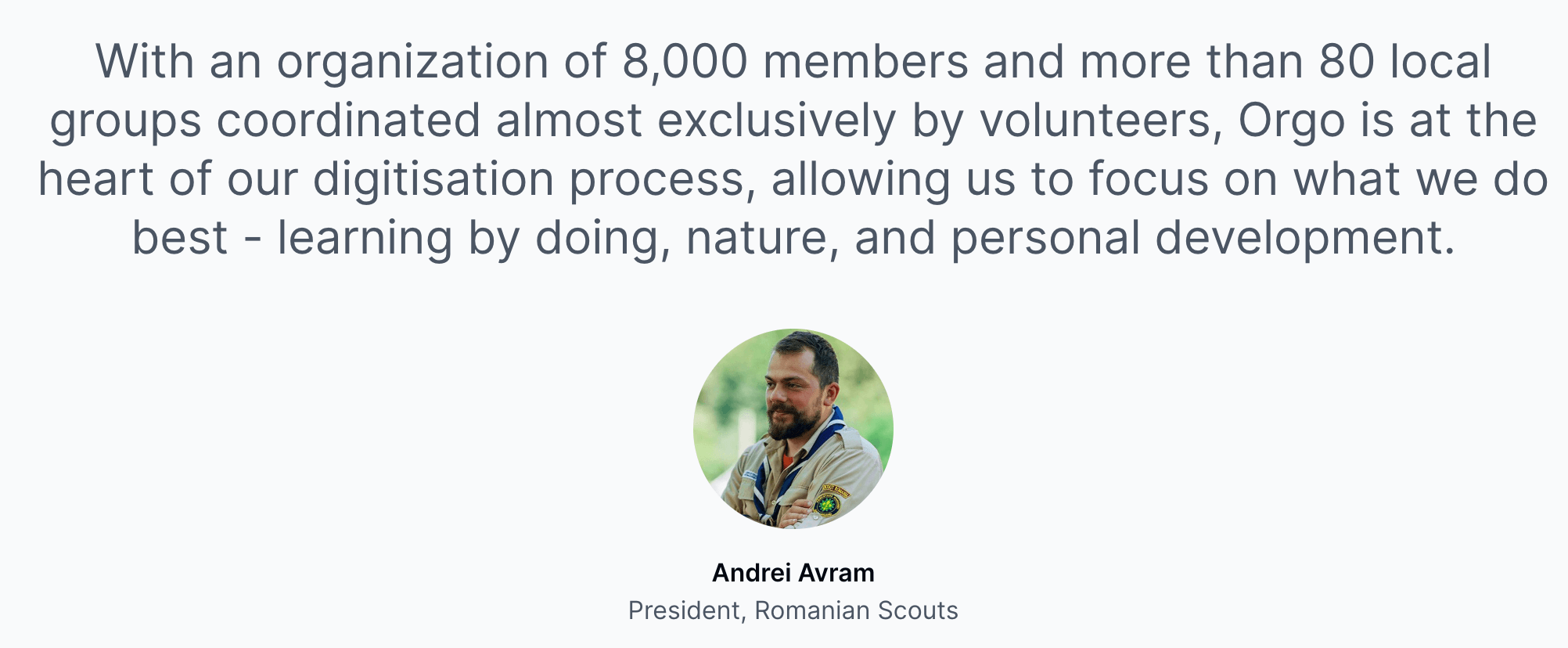
Key lessons from their experience guide other organizations pursuing multi-chapter optimization. Balance remains crucial between centralization and autonomy.
Technology adoption succeeded through gradual implementation, extensive training, and support. Administration time savings and simplified processes improved volunteer engagement. Organizational culture evolved from viewing administration as a burden to leveraging technology as an enabler.